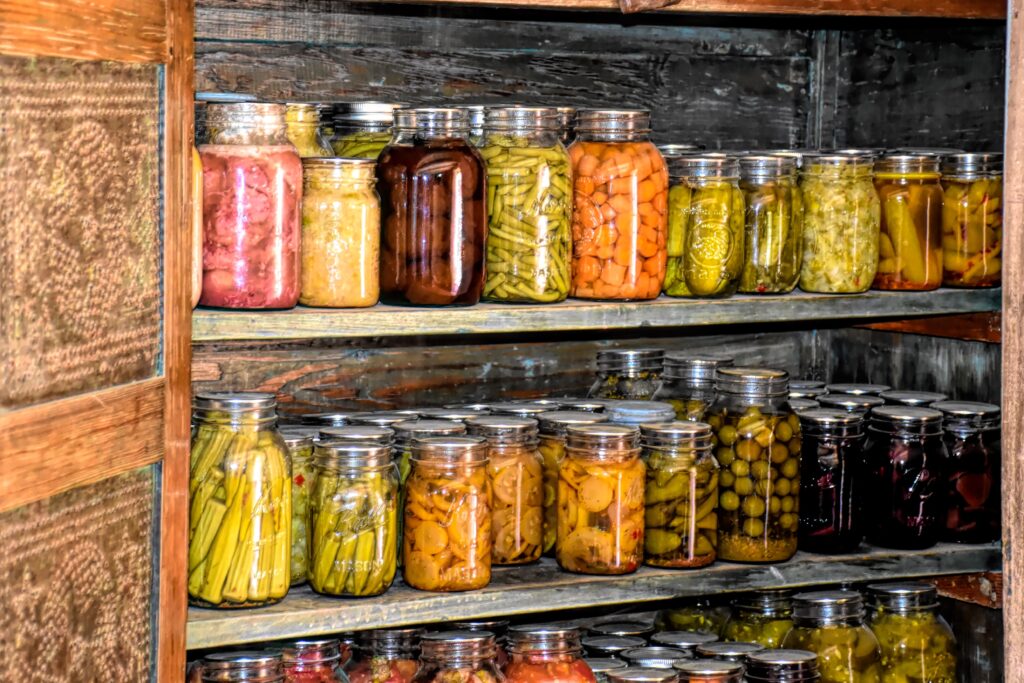Canning is an important and safe way to preserve food when practiced properly. Canning involves placing food in jars and heating it to a temperature that kills microbes that can be a health hazard or spoil the food.
Further, enzymes that could ruin the food can be lessened through canning. The jar’s air is expelled during heating, and a vacuum seal is created when it cools. The vacuum seal stops air from contaminating the food with bacteria. As canning is the most efficient food preservation, everyone must remember that there are some things to consider before canning, such as the cost.
Canning Equipment Cost
Depending on the type of food you like to preserve, there are three safe canning processes: the boiling water bath, the atmospheric steam canner, and the pressure canner.
The canning method requires jars, lids, and rings. You will also need a large pot (for acidic items) or a pressure cooker (for other food items). First, for the cost of jars, brand news ones vary from 8 to 10 dollars for one dozen. It is more advisable to use mason jars when home canning. Commercial single-use pots are more likely to crack when put in a pressure canner and have a lower likelihood of sealing.
Lids may not fit disposable jars. Thus, more versatile containers such as mason jars in various sizes are good choices. Most recipes are designed for pint and quart glasses. If more than smaller jars are needed for home canning, half-gallon jars are recommended, especially for vegetable and fruit canning preservation.
The best way to cut your canning costs is to reuse all the old mason jars you have around the house. You may ask some friendly neighbors, friends, and relatives who have reusable spare jars for canning purposes. However, when purchasing a used jar, run your finger along the rim of the jar to make sure there are no nicks or tears that would prevent it from sealing properly.
The suggested lid comprises a separate metal screw band and a flat metal disk with a sealing compound around the outside border. While the lids are considered for reuse, the bands may be reused as long as it’s free from rust components. Lids may cost $2-3 a box, making a rough estimate of $0.16 apiece.
Moreover, you will need a pressure canner if you intend to home-can vegetables, which is quite expensive but can be used for a very long period—price range from $100 to $120 depending on the quality of the equipment.
The next thing to consider is the cost of the food you want to do the home canning method. Luckily, this step tends to be incredibly cheap. It also offers a glimpse into a future where canned food saves money instead of buying canned goods.
Canning is a method of heat sterilizing food in an airtight container to obtain a commercially sterilized product that allows food to be stored at room temperature while maintaining food safety. Certainly, it would help if you considered the price of the ingredients or the components for canning. If you cultivate your produce at home and can it, the cost is less than $.25 a jar. The price will vary if you buy the product, but it’s often less than $2 per jar of the finished product.
Things to Remember Before Canning
Each fruit or vegetable you want can have a slightly different recipe you should follow for safe storage. This is mainly because acidic and basic foods are treated differently. You should also follow your specific canner’s instructions, as the required pressure may vary from equipment to equipment.
Regardless of your recipe, it would be best to sterilize the jars to keep the food safe and not provide any menu with harmful bacteria. First, wash the jars with soapy water and place them in the oven to heat for 15 minutes. This process will kill bacteria lurking in the jar, keeping you and your loved ones safe.
Lastly, foodborne illnesses associated with home canned food consumption are often associated with failure to follow research-based canning instructions, inability to use pressure canning for low-acid foods, signs of spoilage, and lack of knowledge about canning for botulinum toxin. No one wants to consume a jar of botulism for dinner. So, do your research thoroughly.
Will You Save More Money in Home-Canning?
The answer is definitely yes if you compare home-canned foods with store-bought goods. Perhaps not if you’re comparing it to the cheapest canned food you can find, are solely considering the price, and need to grow the ingredients yourself.
Home canning also allows you to control what goes into your canned foods. While home canning makes financial sense in the future, health advocates will also agree that doing your canning method helps a sustainable and healthy lifestyle. That’s because your own canned food isn’t stuffed full of preservatives and additives and needs to be transported thousands of miles to be put in your pantry.
Over time, eating homemade canned foods instead of store-bought foods can improve your overall health and help you reach your weight-related goals. It offers a variety of health benefits, such as improved health, a stronger immune system, and more.
Conclusion
Canning is one of the most efficient ways to save a few bucks and help you live a healthier and more fulfilling lifestyle. Simply put, it is better to open your home-canned jars savoring how you put extra effort into preserving your food, knowing your fresh, canned foods only get better daily. But there are important things always to follow when canning your food. These methods will ensure that you will serve only the best-canned food you can offer your family. Also, who will say no to a personalized gift of home-canned food on a special occasion?
